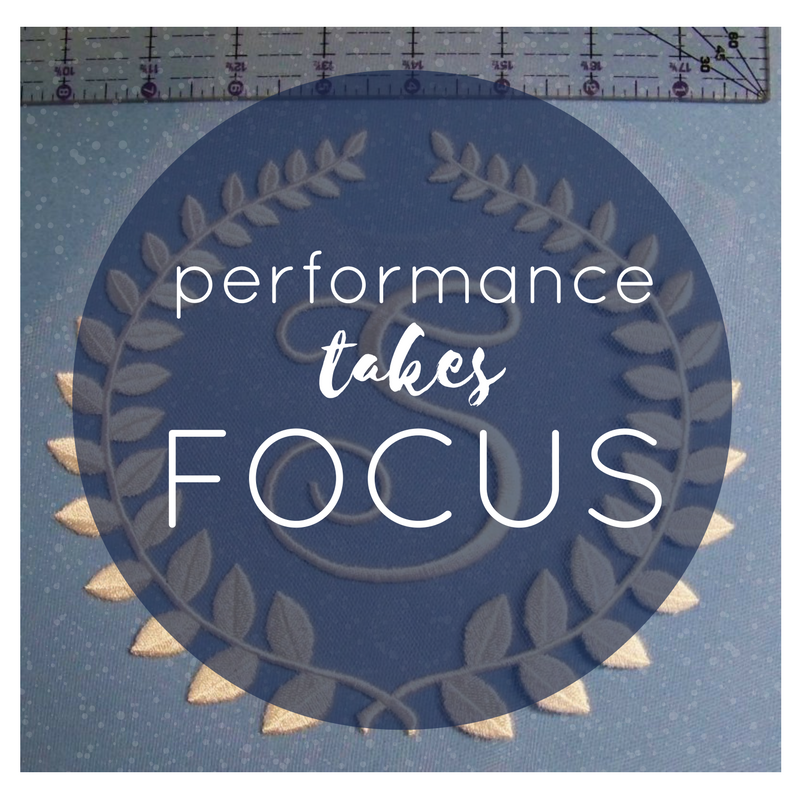
Aside from your willingness to work, there is nothing more important to your performance than focus.
If I’ve learned one thing in talking shop with hundreds upon hundreds of apparel decorators, it’s that the largest hurdle they face usually isn’t a technical problem or a lack of skill. Even when they do have decorating techniques that lack polish, even those issues have the same origin as all others from stitching to sales- every one starts with a flaw in focus.
This year, Printwear Magazine sent me out for a week as a consultant for the Printwear 2016 Tune Up (as featured in their huge November embroidery issue). The winner of the spirited contest was the ever-diligent Regina Cassidy, sole owner and operator of the Virginia-based It Takes a Stitch At first, you might not think she needed a consultant; Regina’s business wasn’t struggling, and skill-wise, she immediately presented as someone well-versed in her craft. If that weren’t enough, the various projects present in her shop showed her to be a multi-talented creative of a high order. Regina didn’t suffer from the usual run of technical complaints; her machines were well-maintained, her digitizing was very solid, and her embroidery production was on-point, making use of all the right materials and tools.
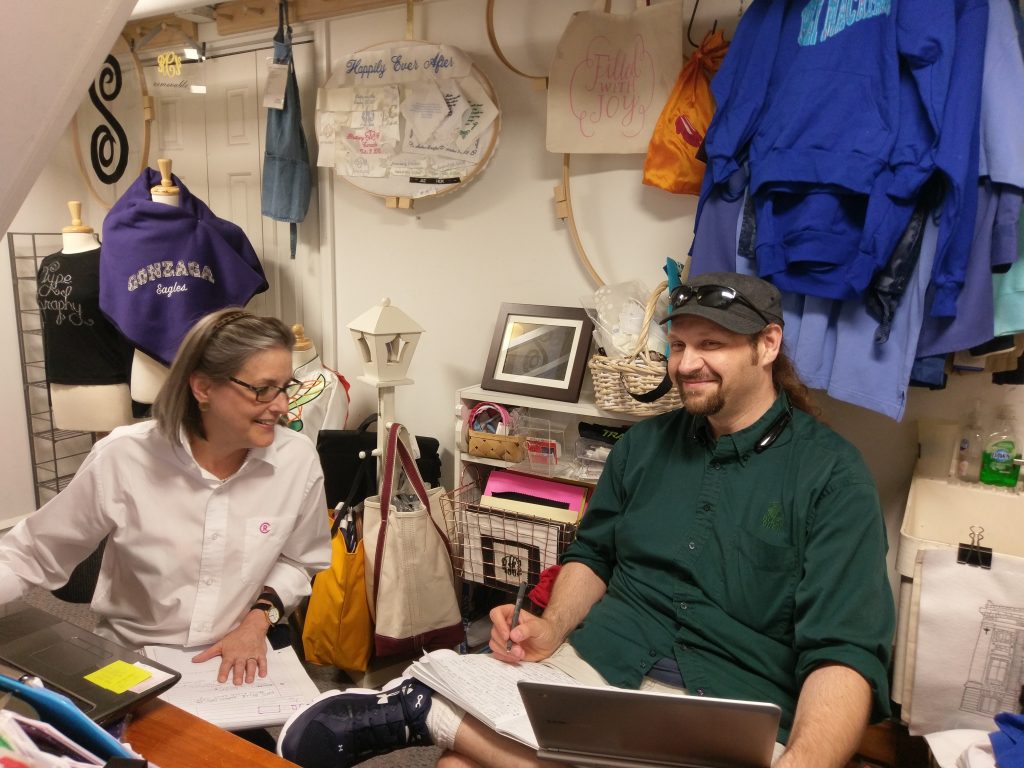
We got on famously, then again, how could you not when both people can tirelessly talk about embroidery?
I started out wondering what we’d do to fill out the 5-day visit- but not far after we started discussing her business, the first signs of what was holding back her efforts started to show; she needed focus. Though she had a vision for where she wanted to go in her business and all the skills to make it happen, she was allowing her attention to be split in too many directions and wasn’t setting up boundaries to protect that vision.
Though we did a lot more than talk about focus in those 5 days, it was a constant companion in every discussion. What follows are three areas in which paying attention to focus proved critical, and which I feel would benefit any shop looking to push past a plateau in their progress.
Focus in Direction – Select a Goal and Give it its Season
Regina had a clear vision for It Takes a Stitch. She wanted refine her all-around business and expand it into the realm of high-end custom designs; particularly boutique, individualized monograms. Before the contest entry that won her the Tune-Up was even written, the goal was fully formed. On interviewing Regina, her skill in bridal monogramming became evident, making this move a perfect fit for her talents. Even so, during that same initial day of discovery, Regina showed me another project she was working on that didn’t have the same fit. She had created a custom product that belonged in the realm of baby apparel. Admittedly, the concept was compelling and her execution on the prototypes was wonderful; but from the first moment we discussed it, I had misgivings about the fit, and I could tell Regina did, too.

This is only one of the fantastic veil monograms from It Takes a Stitch’s archives
Regina’s existing business didn’t leave her much time for expansion, so I had to ask the hard question- What does this have to do with custom monogram design? Though the product was interesting, it would have required working with a cut and sew operation, finding buyers for the baby market, working with retailers, and a set of skills and contacts Regina hadn’t begun to develop: this project could have been a full-time venture unto itself. As difficult as it was, I encouraged Regina to set the product aside. This didn’t mean she should abandon the idea forever, but that she should put it on the shelf so that she could the high-end monogram concept that she so wanted to pursue its season.
Think about your own ideas and directions; have you picked a primary drive? If so, what things should you put on the shelf so that you can devote your energy to your top goal? When we focus, when we prune away the excess, we are safeguarding the energy and space our priority goal needs to grow. You don’t have to give up on ever pursuing another goal, but if you want to give any project its best shot at success, you have to give it your attention and divide that attention as little as possible.
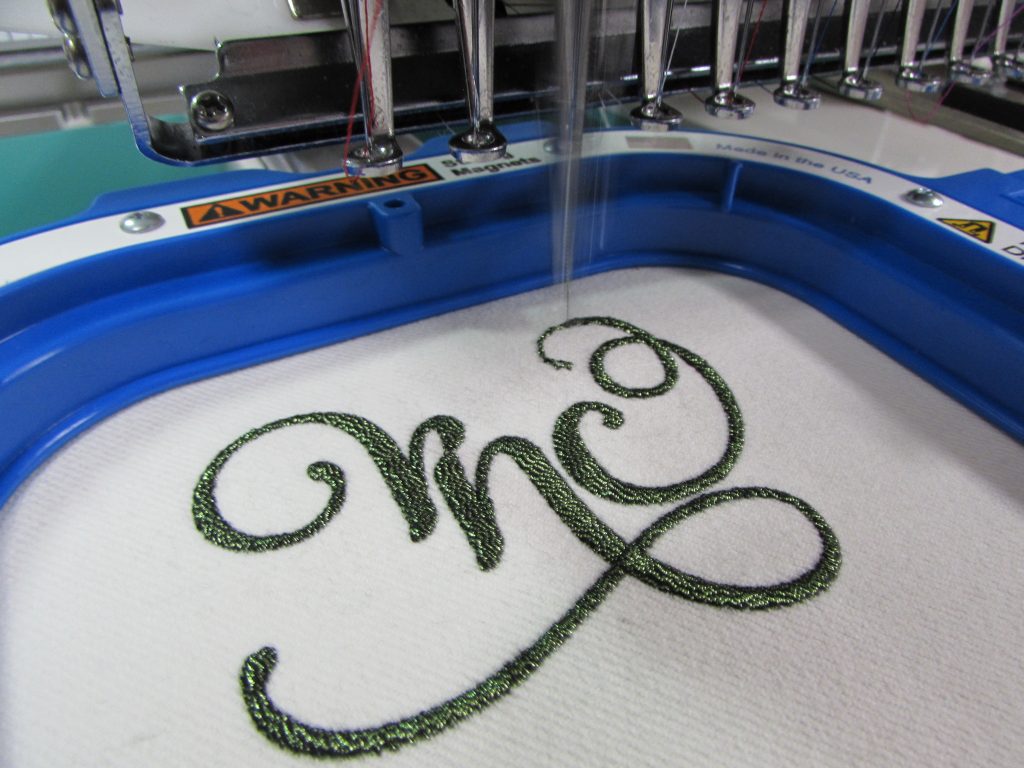
Regina’s own custom-designed monogram gave her a chance to develop and play, but with a purpose.
Focus in Presentation – Show the Work you want to Do
To be known for something, you must let people see that you do that something. Regina hadn’t been sharing her work much publicly and was a little reticent to do so at first; I persuaded her to let go of her worry about always presenting perfect work and to just get out there and share, but with one caveat; she needed to show the kind of work she wants to do, and as an extension, present her business in a way that appeals to the target market for that kind of work. In Regina’s case, the latter meant that I suggested she redesign her logotype to reflect the upscale and custom nature of the work she intended to do. Her branding needed to say, “I’m a creator of finely crafted letters”. Though her original logo was fine, its use of stock fonts and low resolution images was sending the wrong signal. Regina had all the skill she needed to do the redesign herself, and in fact, she has implemented a new branding style that reflects her skill and intentions to a much greater effect. You can’t expect potential customers to tease out who you are or what you do; you need to show them the way.
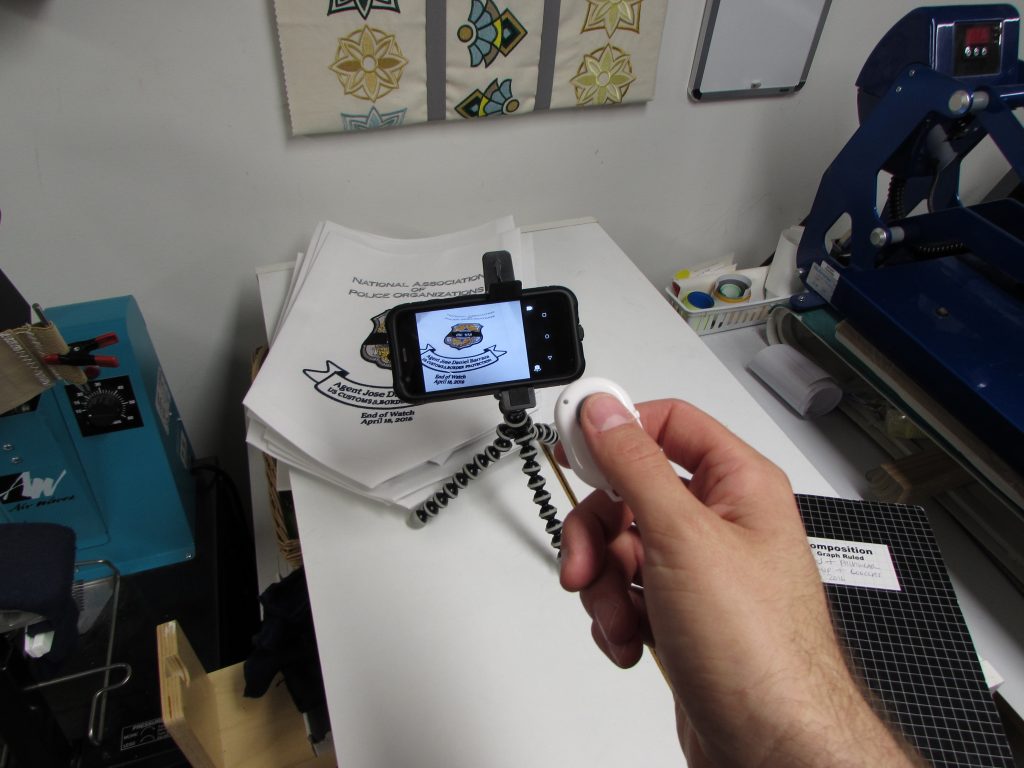
Quick snaps can be easy; mount up your phone, use a selfie trigger if you are shaky, and Instagram away.
The first point of this aspect of focus is one which I’m personally very aware. I learned that the work you show, whether you intend it to be or not, becomes your specialty. Through no intention, I ended up with a new focus in my own creative life.
I had never created many patches or emblems in the first half of my career, but after writing about patches for a couple of blogs, and shared some images of custom-cut patches that I had done, I started to find myself facing more and more patch requests. I’d shared some large and complicated motorcycle club back patches- this unwittingly meant that I would spend a couple of years doing just such back sets for clubs. That entry into emblems eventually transitioned into my designing and creating patches of all sorts. I created them for everyone from local charities and standard B2B clients, to my latest groundswell of custom uniform patches for the costuming departments of New Mexico’s burgeoning film and TV scene. Unwittingly, when I showed that I could create small-run, custom patches in-house, I found out that there were people who were looking for that work and went from biker backs to to B2B, all on the strength of these posts. This is why you curate the content you share; luckily, I love making patches and emblems, but if that had been contrary to my direction, I’d be way off track right now.

NBC’s The Night Shift’s last season closer- I might have had something to do with that outfit.
You must curate and make sure you are promoting work that’s aligned with your intended vision of your shop’s future. Think about your social media streams; are you showing your work at all? If so, are you showing the impressive-looking stuff because it was difficult for you to execute, or are you showing work that interests your target customers? Are you showing the work that you most want to do in years to come?
Focus in Time Management – Set Boundaries for time to Develop, Rest, and Recharge
Regina keeps a full schedule. As a solo proprietor, it’s not surprising that she has a great deal on her plate, but she was allowing her daily grind to spill over into other areas of her life pretty readily. As part of the mantra of focus, we often discussed boundaries. We know that projects need their season to grow and that they live on the attention we give them, it’s easy to see that if we don’t establish boundaries to keep other activities from stealing that time, our goals aren’t likely to be met with success. Make no mistake; it’s paramount to keep the needles moving and the cash flowing, but if you intend to develop in a new direction, to add a new skill, or to court a new audience, you must schedule devoted time to working on your goal. It takes time to learn and practice, promote your work, to build relationships with prospective customers; if you don’t make the time, you’ll fill your days with something else and eventually watch your business stagnate. Focusing on your goals means proactively setting boundaries to protect that time.
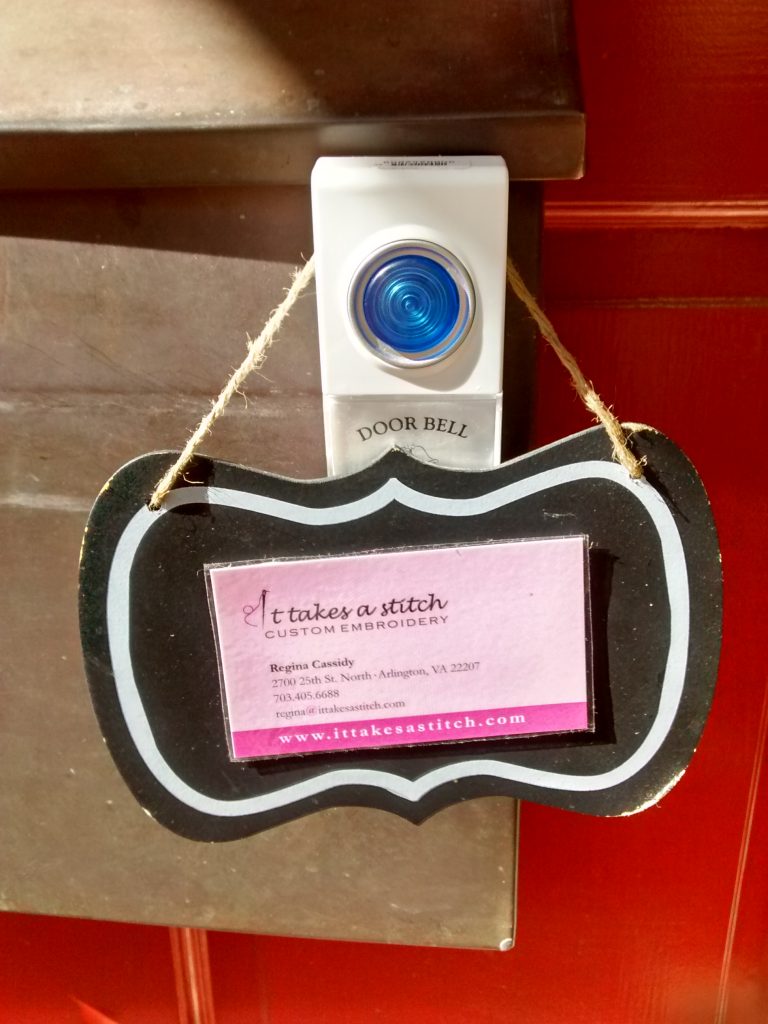
A separate doorbell for her home-based business; at least that’s boundary number one!
Moreover, Regina’s business is built on her ability to work effectively and to be consistently creative. This might seem like a natural state for someone of her abilities, but the way her time was being overrun meant she lacked time for personal development, rest, and recharging her those creative batteries! Designers of all kinds draw from the well of their experiences for inspiration. You can’t keep going to that well without adding new information: whether that’s reading, looking at art, spending time in nature, taking a class, or even doing something completely unrelated to that you can allow your experiences time to marinate and recombine in your resting mind. Go to the well to often without a recharge and you’ll either keep producing a steady variety of uniformly uninspired work, or you’ll pull up empty and find it hard to generate new ideas. Moreover, if you don’t rest, you’ll eventually burn out. You need to actively protect that down time as well- planning for periods of non-billable work and for outright play and rest. If you don’t plan for down-time, that last couple of shirts or that order that’s on the shelf will always step up to take its place and the down-time will come anyway as you collapse creatively or physically.
Think about your schedule; are you making time for developing new ideas, marketing, or skill building? If you are a hard-core nose-to-the-grindstone worker, have you ever had a time where you just couldn’t get anything productive done because you felt so exhausted, but you kept grinding in frustration anyway? Could you have done better with a pause to let yourself think and rest before tackling the next project in the queue?
It’s a two-way street – Get Connected
As far as my own learning about focus, I found that it’s easier to solve problems when you are focused outward. When we think on our own problems, we can get in our own way. We trip over judgments about ourselves or hangups about the way we do (or feel we have to do) things. Though this isn’t surprising, I found myself fascinated by all I could see when working on It Takes a Stitch; without all of the collateral that I have invested in my own work, the decisions and discoveries came more easily.
This has two implications that you can put to use; First, there’s a good reason to seek out consultants and mentors; even when we may feel that we’re close to their level of experience, the clarity of their view on our situation benefits from professional distance. Second, when we chose to be mentors and help others, we will learn. There’s no doubt in my mind that the conversations we have both in teaching and sharing our work with peers are some of the most enriching experiences we can have in our industry and in our professional development. Get an outside view of your work and offer the same to those around you; there’s value in both sides of the equation. For my part, I’ll never forget the time spent with Regina, nor all she taught me in the balance. I learned to hone my own focus and what face-to-face mentoring can mean; that’s why you’ll see more of me teaching in the near future; it’s the best way to keep learning and really connect.
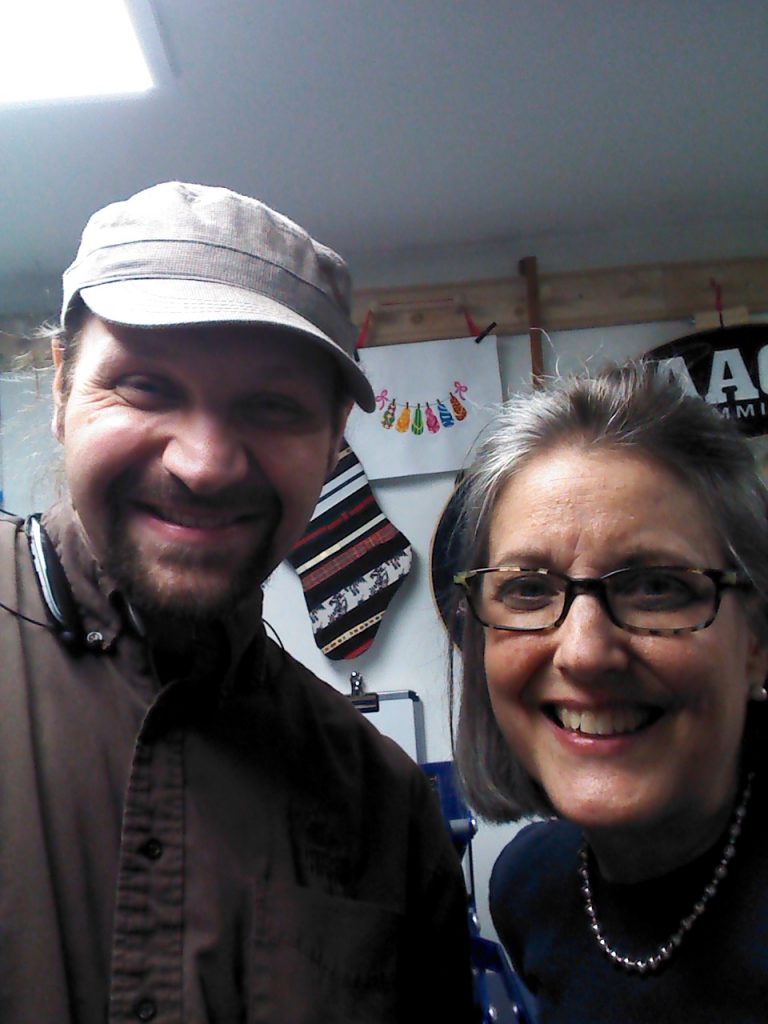
Nothing’s better than connecting with your peers to help you evaluate your work and stay accountable to your goals. Thanks, Regina!.
If you’d like to benefit from coverage of all 5 days of the Tune Up, see more images of Regina’s work, and get some video chatter from yours truly, check out the extensive online exclusives below!








LEAVE A COMMENT